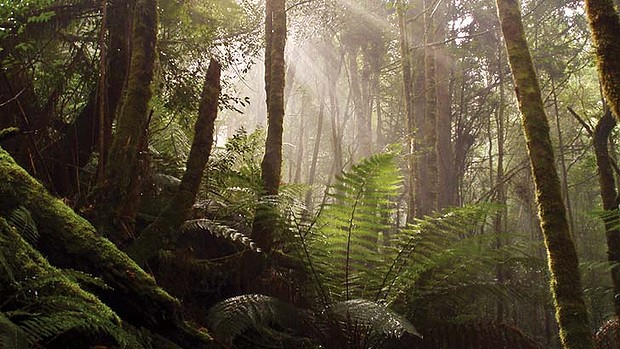
Government has filed a proposal with the UNESCO World Heritage Committee to delist 74,000 hectares of highly contentious forests.
A leading world heritage expert has warned Australia is sending a worrying global signal about the importance of the highest conservation benchmark by seeking to delist Tasmanian forests.
Peter Shadie, a member of the world heritage panel of the International Union for the Conservation of Nature for the past 10 years, said a federal government proposal to wind back protection of 74,000 hectares was at odds with Australia being a country many others looked to for leadership on world heritage.
''It is concerning that a country such as Australia should be taking a more expedient approach,'' Mr Shadie said. He compared Australia's push with proposals by other countries to reduce world heritage protection for resource exploitation.
Russia was attempting to remove protection of the Virgin Komi forest reserve in the Urals for gold mining and Tanzania wanted to change boundaries to the Selous Game Reserve to allow uranium mining.
The government has filed a proposal with the UNESCO World Heritage Committee to delist 74,000 hectares of highly contentious forests that was part of a 170,000-hectare addition to the Tasmanian Wilderness World Heritage Area approved last year.
The International Union for the Conservation of Nature is an official adviser to the committee and asked it to add the forests to the Tasmanian Area as recognition of their outstanding universal value.
It is understood that some members of the government originally sought to wind back the entire 170,000 hectares, but Environment Minister Greg Hunt argued the world heritage listing of some areas be kept.
Parliamentary secretary for agriculture Richard Colbeck said tens of thousands of hectares now inside the world heritage area had been logged and degraded, and their listing last year was part of a politically motivated ploy to destroy the native forestry industry.
The World Heritage Committee approved the entire 170,000 hectares last year after being told some logged areas that had been included would be rejuvenated.
Mr Shadie is based in Leura, and was not involved in last year's decision. He said the conservation union had a 40-year history of rigorously considering the evidence before it.
Responding to Mr Shadie's comment, Mr Hunt said that the government respected the conservation union and would ''let the World Heritage Committee carry through their considerations carefully''.
The federal government is yet to release details of the 117 areas within the 74,000 hectares that it says are degraded.
Meanwhile, a government source has clarified confusion over a letter from Mr Hunt about the forests that claimed that ''every part of the Styx-Tyenna, Weld-Snowy, Huon Picton and Great Western Tiers areas'' would remain protected after the delisting.
A map posted on the Environment Department website shows parts of the Styx, Weld-Snowy, Picton and Great Western Tiers among the areas the government wants removed. The source said an editing error in Mr Hunt's office meant the words ''already in parks and reserves'' was cut from the relevant sentence in the letter to the Herald.
The proposal to delist the forests will be considered at the next meeting of the 21-nation World Heritage Committee at Doha, Qatar, in June.



















